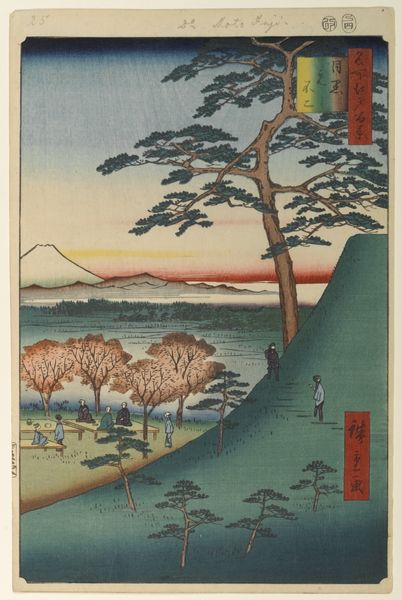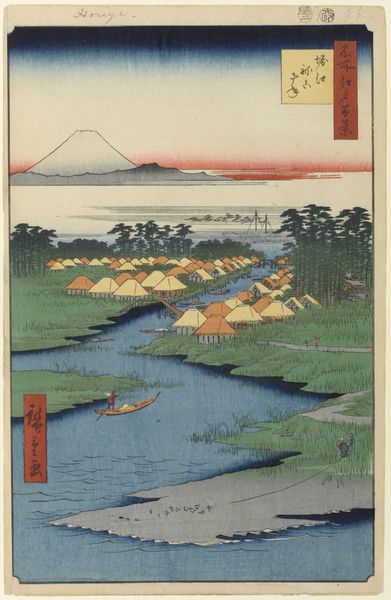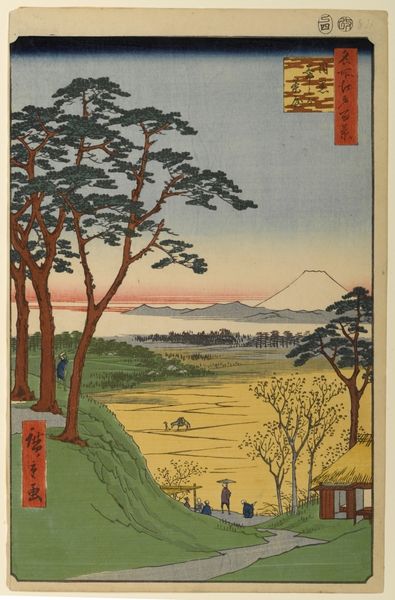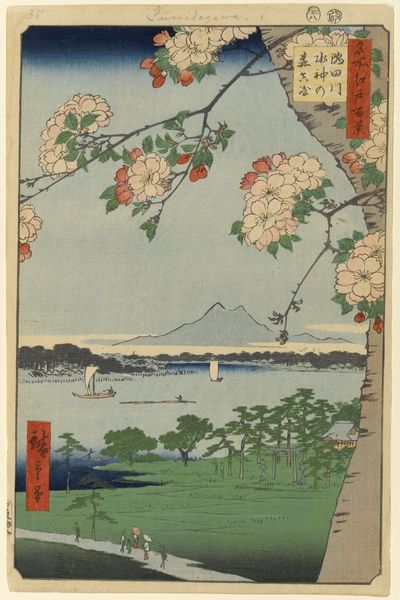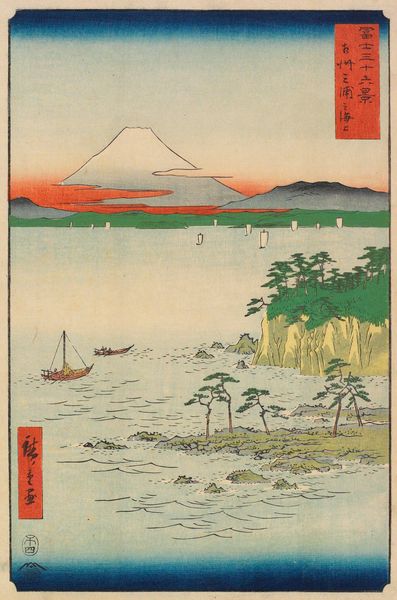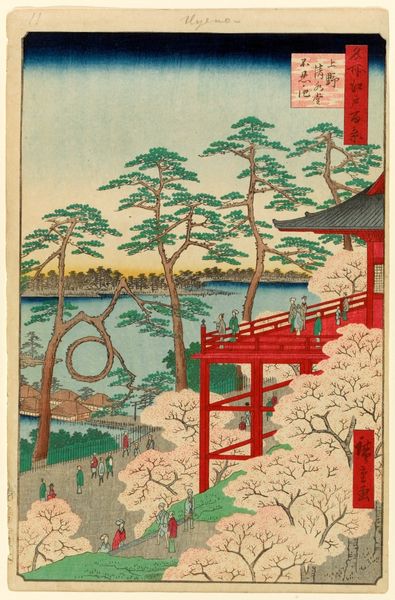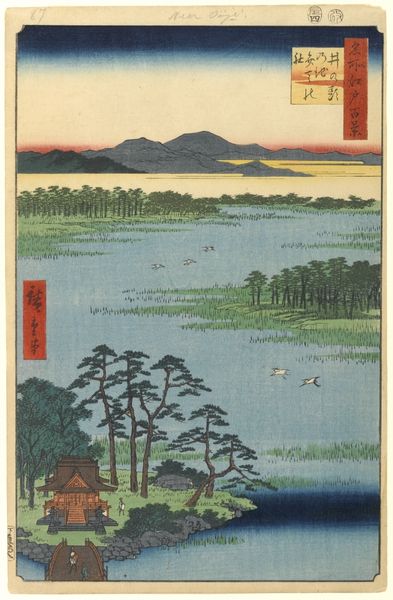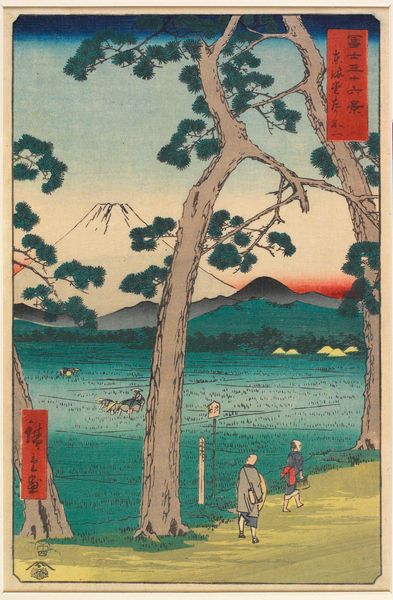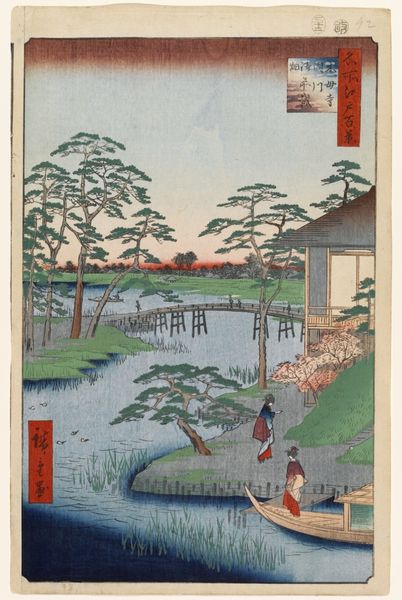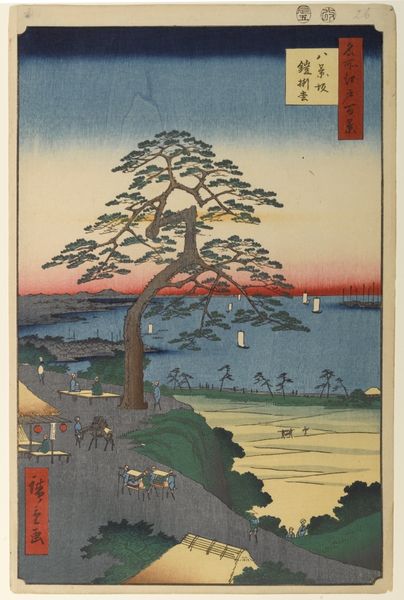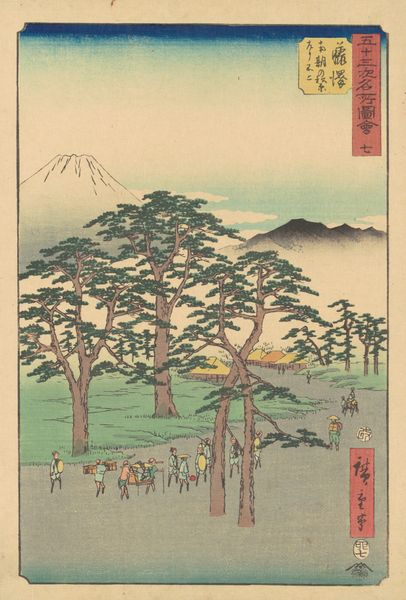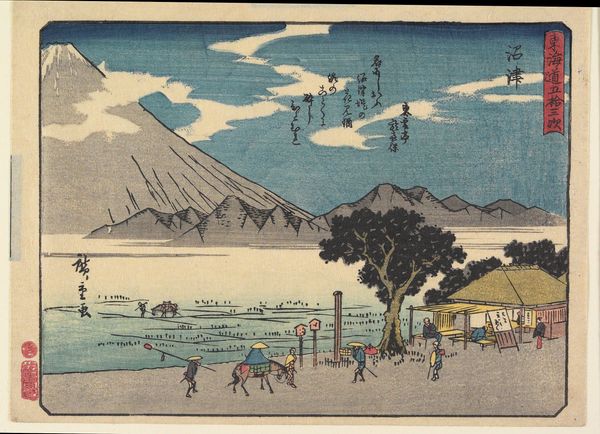
Copyright: Public domain
Curator: Utagawa Hiroshige's woodblock print, "View to the North from Asukayama," created in 1857, offers a compelling snapshot of Edo-period leisure. Editor: It feels like stolen moment, a captured breath. The gentle sweep of green leading up to the vast blue reminds me of being a kid lying in the grass, watching the clouds morph into fantastical shapes. Curator: Indeed. The composition employs a distinct horizontal division. The lower register bursts with activity, detailing figures enjoying picnics amidst flowering cherry trees, visually grounding us in the present moment of Asukayama. Editor: And what's so striking is the sense of depth achieved through flattening! Those distant hills almost seem suspended, like paper cutouts layered one on top of the other, creating this incredible feeling of space. But the artist managed to keep it grounded. Curator: A flattening characteristic of Ukiyo-e prints, yes, serving not as a failure of perspective but as an aesthetic choice to emphasize the graphic quality. We can delve into the function of cherry blossom as a signifier, often utilized within Edo period woodblock prints to illustrate the fleeting essence of existence… Editor: Woah, yes! Those blossoms! They add that little wink to time, reminding you to savour every little sip, knowing everything’s so transient. They feel so incredibly soft here. I imagine a breeze shaking the trees gently while friends drink sake and tell stories. What’s beyond that band of blue, beyond those far-off mountains, huh? Curator: Perhaps, just as Hiroshige intended, a deeper contemplation on the world both seen and unseen and a play of the ephemeral and monumental as co-existing realities, simultaneously appreciated from Asukayama Hill. Editor: Well put. I love how art allows us that quiet space to appreciate existence, one woodblock print at a time.
Comments
No comments
Be the first to comment and join the conversation on the ultimate creative platform.
